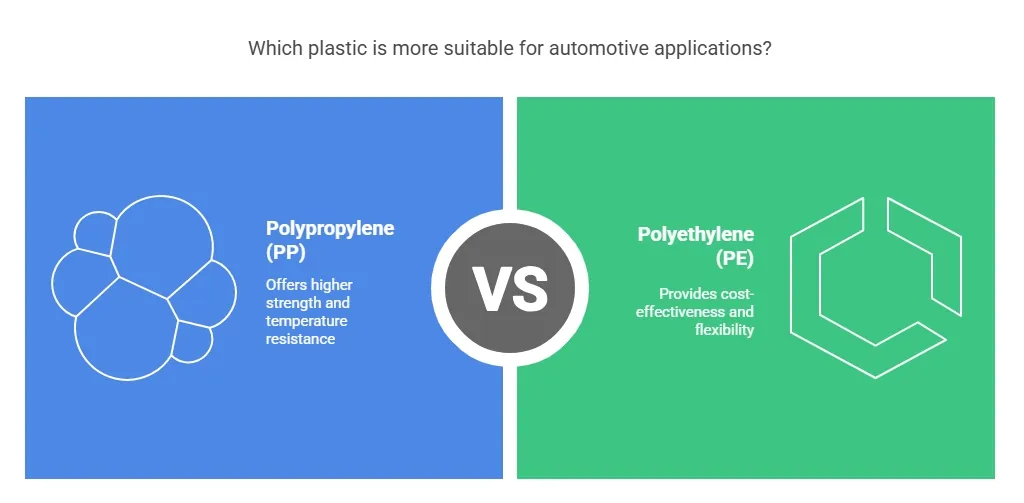There are over 85,000 of material for plastic injection molding to choose from. Imagine how overwhelming it for the entrepreneurs, the product designers, and other stakeholders to pick the right material for their designed part.
If you are new to this method of manufacturing, there is an easy way to find the right material. Looking for the overall material composition is the first step.
Table of Contents
ToggleSome Facts about Plastics
There are two basic categories for plastic: the thermoplastics and the thermoset plastics. To help differentiate between the two, just remember that thermoset has the word “set” in the processing. This means that the chemical process is not reversible, and the thermosets cannot be reshaped or re-melted, and recycling can be quite a challenge if a bio-based polymer is not used.
Thermoplastics, on the other hand, can be heated and cooled using a mold to create a part. When the components are cooled, they will return to their original state and can be re-melted and repeat the process. Compared to the other type of plastic, this type of plastic can be recycled and reused. This is the same reason why thermoplastics are the conventional resins used in plastic injection molding.
Before selecting the best resin for a project, some questions need to be answered to guide you to the right material, here are some of them.
- What is the part for?
- Does it need to flexible or rigid?
- Does it need to withstand weight and pressure?
- Is the part going to be exposed to the elements?
- Are there special considerations on its appearance?
- Do you require a particular finish?
- Is there any regulatory requirement?
A Closer Look at Plastics
Thermoplastics are further categorized into different types and families. To date, there are three major categories of this type of plastics: the engineering resins, commodity resins, and the high performance or specialty resins. The latter is the most expensive are not commonly used.
Commodity resins are less expensive and easy to process; hence, they are the preferred material for mass production like packaging materials. Engineering resins offer greater durability and resistance to elements and harsh environmental conditions.
In each of the families of plastics, the resins have different morphology. This refers to the arrangement of molecules in the resin. It is divided into two categories: amorphous and semi-crystalline.
Amorphous resins have less shrinkage after cooling; they have better transparency and works well on products that have tight tolerances. However, they are also brittle and can’t withstand chemicals.
Semi-crystalline resins, on the other hand, are opaque; they have a higher resistance to abrasion and chemicals, are less brittle but with high rates of shrinkage.
Examples of Resins
Amorphous
For the amorphous type, the most common resin is PS or polystyrene. It is brittle and transparent and can be used in high-precision applications. You can see it in everyday items like plastic cutlery, plates, and foam cups.
Also belonging to the amorphous type are the engineering resins like polycarbonate. This material is temperature resistant and has an electrical insulating property and are used mostly as an electrical component.
For high-performance or specialty resin, the best example is polyetherimide or PEI. Like the other amorphous plastic, they are chemical resistant and are used mostly in the aerospace industry.
Semi-crystalline
The most common and inexpensive semi-crystalline resin is polypropylene; its prime characteristic is being chemically-resistant and flexible. You can find this type of resin in many applications like packaging, pipes, and plastic bottles.
In engineering resins, the most common is polyamide or nylon. It offers resistance to chemicals and abrasions and has low shrinkage. There are bio-based versions that are now available for an earth-friendly alternative. This material is also sturdy and lightweight alternative to metal in many automotive applications.
PEEK or polyetheretherketone is the most popular semi-crystalline high-performance resins. It offers strength as chemical and heat resistance. It is often used in demanding environments like medical implants, pumps, and bearings.
Qualities to Look for in Plastic Resins
Material Hardness
The hardness property of each material falls on the scale. To measure the hardness of the materials, a device the measure the shore hardness is used. This separates the plastic into Type A and Type D for its softness or hardness. The scale can vary from zero to 100 and is commonly referred to as Shore Hardness. It is essential to choose the right hardness of material for the correct product application.
Material Flexibility
There is a common conception that all materials that are flexible and that all hard materials are stiff. This is not the case, as there is a difference between being soft and being flexible. Flexibility refers to the ability to bend under stress without breaking, and stiffness is the resistance to bending when under pressure.
Material Weight
The weight of the material is another essential quality that plays a role in the selection of material. In the end, it is the density of the plastic polymer that determines how heavy or how light the final product should be.
Material Cost
For a manufacturer, the material cost is essential, particularly in plastic injection molding. However, it should not be the main deciding factor. It is better to weigh more on the product application rather than the cost.
Conclusion
All materials for plastic injection molding have their properties. It is crucial to consider the defining characteristics of all the materials before choosing what to use. If the selected material falls short of some properties, you can add fillers and additives to get the right material properties.







